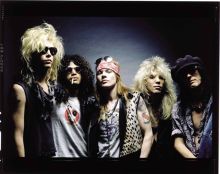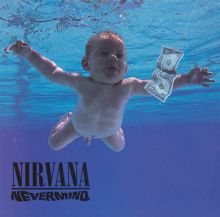User Profile
Drew Wilson
I review an electric variety of music ranging from the 70s to 2000s. Some of my favorite bands include Everclear, Guns N’ Roses, Alice Cooper and Drive By Truckers.
Reviews
42
Lists
9
Collection
6
Drew Wilson's Followed Artists
All Followed ArtistsDrew Wilson's Album Reviews
All Album ReviewsReleased on June 18, 1991, Van Halen's For Unlawful Carnal Knowledge marked their third consecutive No. 1 album with Sammy Hagar at the helm, following OU812 and 5150. As their ninth studio endeavor, it represented a conscious departure from the synthesizer-infused, pop-centric sound that defined their '80s records. In an effort to reconnect with their foundational hard rock essence, the band retreated to Eddie Van Halen's home studio in 1990, intentionally sidelining the synthesizers in favor of a more direct and aggressive musical approach. Under the guidance of renowned producer Andy Johns—famed for his work with the likes of Led Zeppelin and the Rolling Stones—For Unlawful Carnal Knowledge achieved a sonic refinement that emphasized raw energy and precision. The result was a sharper, more muscular sound that contrasted with the polished, radio-friendly qualities of their earlier albums. John's meticulous production ensured that the drums, in particular, had a more pronounced bite, further accentuating the album's forceful character. The album opens with "Poundcake," a showcase for Eddie Van Halen's virtuosity, his signature guitar phrasing underpinned by a dynamic and commanding rhythm section. "Judgement Day" follows, driven by a searing metallic guitar riff that complements Hagar’s ferocious, snarling vocals. "Spanked" introduces a sultry bass line, elegantly paired with a punchy, rhythmic guitar riff. The blues-inflected guitar work of "Runaround" fluctuates between emotive licks and a heavy, robust chord progression. "Pleasure Dome" begins with a textural keyboard motif before giving way to a groovy, funky guitar ostinato. "In 'N' Out" is propelled by a powerful bass foundation, paired with Eddie’s signature combination of palm-muted riffs and tight, percussive strumming. "Man On A Mission" pulses with distorted guitar tones, complemented by crisp guitar phrasing and a taut rhythmic performance. "The Dream Is Over" unfolds from a distorted riff into a more expansive, emotionally evocative progression. "Right Now" is anchored by a palm-muted chord progression, layered seamlessly over a driving rhythm section. The instrumental "316" reflects a neoclassical influence, with flowing bends and delicate vibrato creating a rich tapestry of sound. Finally, the album culminates in "Top of the World," where a sharp, shimmering guitar riff introduces Hagar’s soaring vocals, which glide effortlessly over a propulsive rhythm. While For Unlawful Carnal Knowledge marked a crucial turning point for Van Halen, revitalizing their career and ensuring their prominence on MTV, it remains a disjointed effort in certain respects. Despite Eddie Van Halen’s neoclassical guitar flourishes, the album struggles to reconcile its disparate musical influences within such a compressed timeframe. Several tracks feel somewhat perfunctory, as though the band was attempting to occupy space rather than push the boundaries of their sound. Ultimately, while it offers moments of
Was this review helpful?
By the mid-1980s, Tom Petty and the Heartbreakers, though celebrated for their early successes, found themselves in a creative lull. Their 1987 album, Let Me Up (I’ve Had Enough), veered into metallic eighties pop, straying from the Southern-flavored roots rock that had defined their earlier sound. In 1988, Petty began work on a solo project inspired by the likes of Bruce Springsteen and Phil Collins, with production assistance from Jeff Lynne. However, progress stalled when George Harrison invited him to collaborate on B-sides for Cloud Nine. This collaboration ultimately birthed the "supergroup" Traveling Wilburys, whose 1988 debut album, Volume One, was a critical and commercial triumph. The experience deeply shaped Petty’s approach when he resumed work on his solo album.
The resulting record, Full Moon Fever, opens with the timeless “Free Fallin’,” a track propelled by its jangly acoustic guitar motif, which transitions effortlessly into shimmering, reverberating electric layers. Next is “I Won’t Back Down,” anchored by a twangy guitar progression and driven by a crisp, steady rhythm section that exudes unshakable resolve. “Love Is a Long Road” delivers a punchy rhythm, punctuated by sharp snare hits and gleaming, choppy guitar textures. In contrast, “A Face in the Crowd” is a delicate ballad, built around a gentle acoustic strum and accented by crystalline electric guitar flourishes.
“Running Down a Dream” injects bluesy energy, with soulful guitar riffs supported by grounded percussion, creating a relentless, driving rhythm. The Byrds-esque “Feel A Whole Lot Better” brightens the album with its chiming guitar lines, a prominent bassline, and wistful vocal delivery. “Yer So Bad” stands out for its intricate harmonies, polished guitar motifs, snappy licks, and a groovy bass foundation. The warmth continues with “Depending on You,” a jangly tune driven by a smooth acoustic strum, crisp backbeat, and warm bassline.
“The Apartment Song” quickens the pace, blending taut drum patterns with brisk acoustic energy. “Alright Now” takes a more straightforward approach, featuring a chunky power chord progression, punchy rhythms, and syncopated hand claps. “A Mind With a Heart of Its Own” infuses bluesy guitar licks with a buoyant bassline, complemented by the playful twang of a honky-tonk piano. The album closes with “Zombie Zoo,” a quirky track featuring backup vocals from Roy Orbison and a lively penny whistle organ, perfectly underscoring Petty’s sardonic performance.
Full Moon Fever achieved remarkable success, climbing into the Top Ten on both sides of the Atlantic and earning 5× platinum certification in both the U.S. and the U.K. The following year, Petty reunited with the Traveling Wilburys to release their second album, Volume 3—humorously skipping “Volume 2.” In 1991, Petty returned to the Heartbreakers for Into the Great Wide Open, reigniting his career and solidifying his place as a rock legend for years to come.
The resulting record, Full Moon Fever, opens with the timeless “Free Fallin’,” a track propelled by its jangly acoustic guitar motif, which transitions effortlessly into shimmering, reverberating electric layers. Next is “I Won’t Back Down,” anchored by a twangy guitar progression and driven by a crisp, steady rhythm section that exudes unshakable resolve. “Love Is a Long Road” delivers a punchy rhythm, punctuated by sharp snare hits and gleaming, choppy guitar textures. In contrast, “A Face in the Crowd” is a delicate ballad, built around a gentle acoustic strum and accented by crystalline electric guitar flourishes.
“Running Down a Dream” injects bluesy energy, with soulful guitar riffs supported by grounded percussion, creating a relentless, driving rhythm. The Byrds-esque “Feel A Whole Lot Better” brightens the album with its chiming guitar lines, a prominent bassline, and wistful vocal delivery. “Yer So Bad” stands out for its intricate harmonies, polished guitar motifs, snappy licks, and a groovy bass foundation. The warmth continues with “Depending on You,” a jangly tune driven by a smooth acoustic strum, crisp backbeat, and warm bassline.
“The Apartment Song” quickens the pace, blending taut drum patterns with brisk acoustic energy. “Alright Now” takes a more straightforward approach, featuring a chunky power chord progression, punchy rhythms, and syncopated hand claps. “A Mind With a Heart of Its Own” infuses bluesy guitar licks with a buoyant bassline, complemented by the playful twang of a honky-tonk piano. The album closes with “Zombie Zoo,” a quirky track featuring backup vocals from Roy Orbison and a lively penny whistle organ, perfectly underscoring Petty’s sardonic performance.
Full Moon Fever achieved remarkable success, climbing into the Top Ten on both sides of the Atlantic and earning 5× platinum certification in both the U.S. and the U.K. The following year, Petty reunited with the Traveling Wilburys to release their second album, Volume 3—humorously skipping “Volume 2.” In 1991, Petty returned to the Heartbreakers for Into the Great Wide Open, reigniting his career and solidifying his place as a rock legend for years to come.
Was this review helpful?













